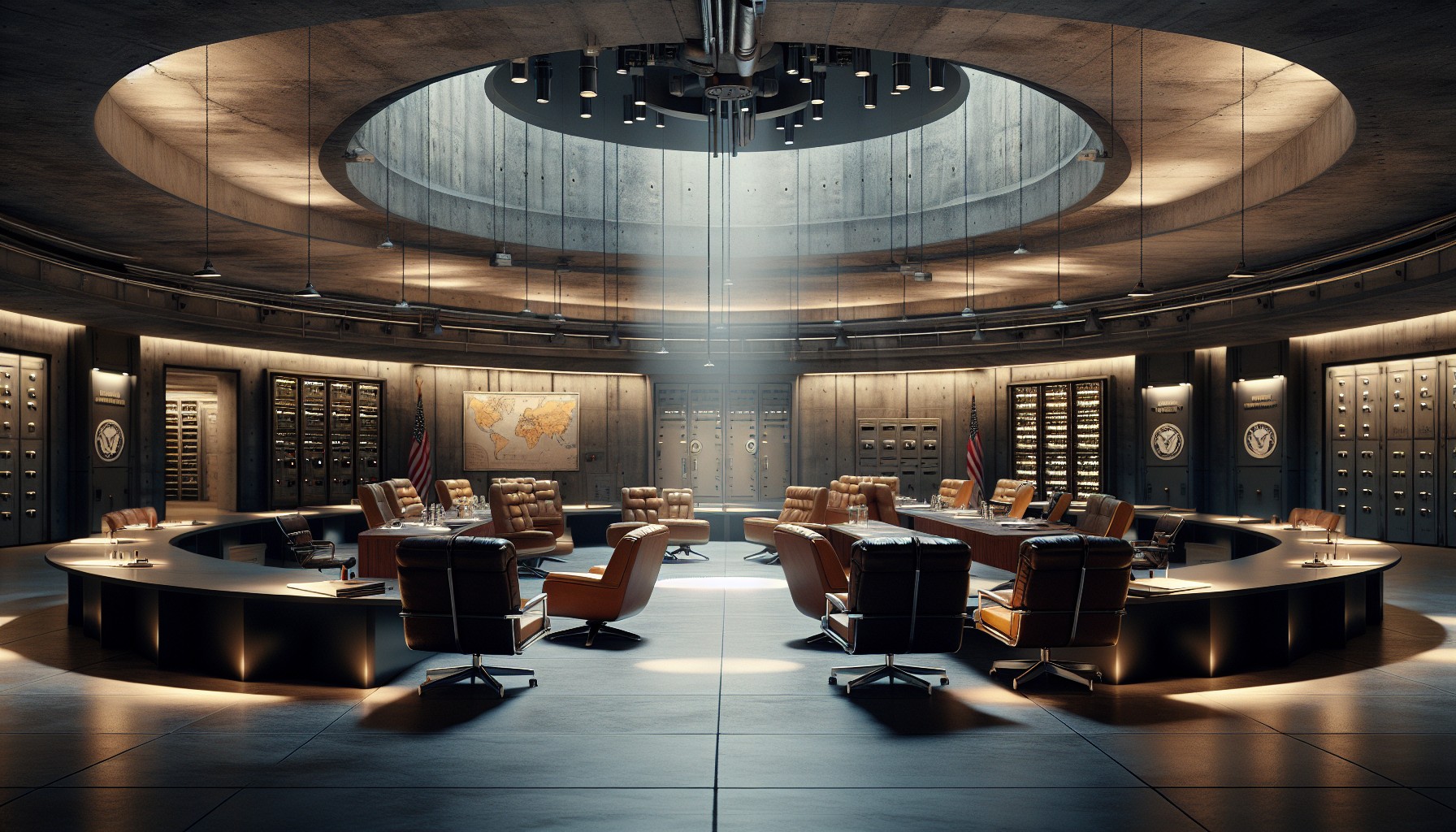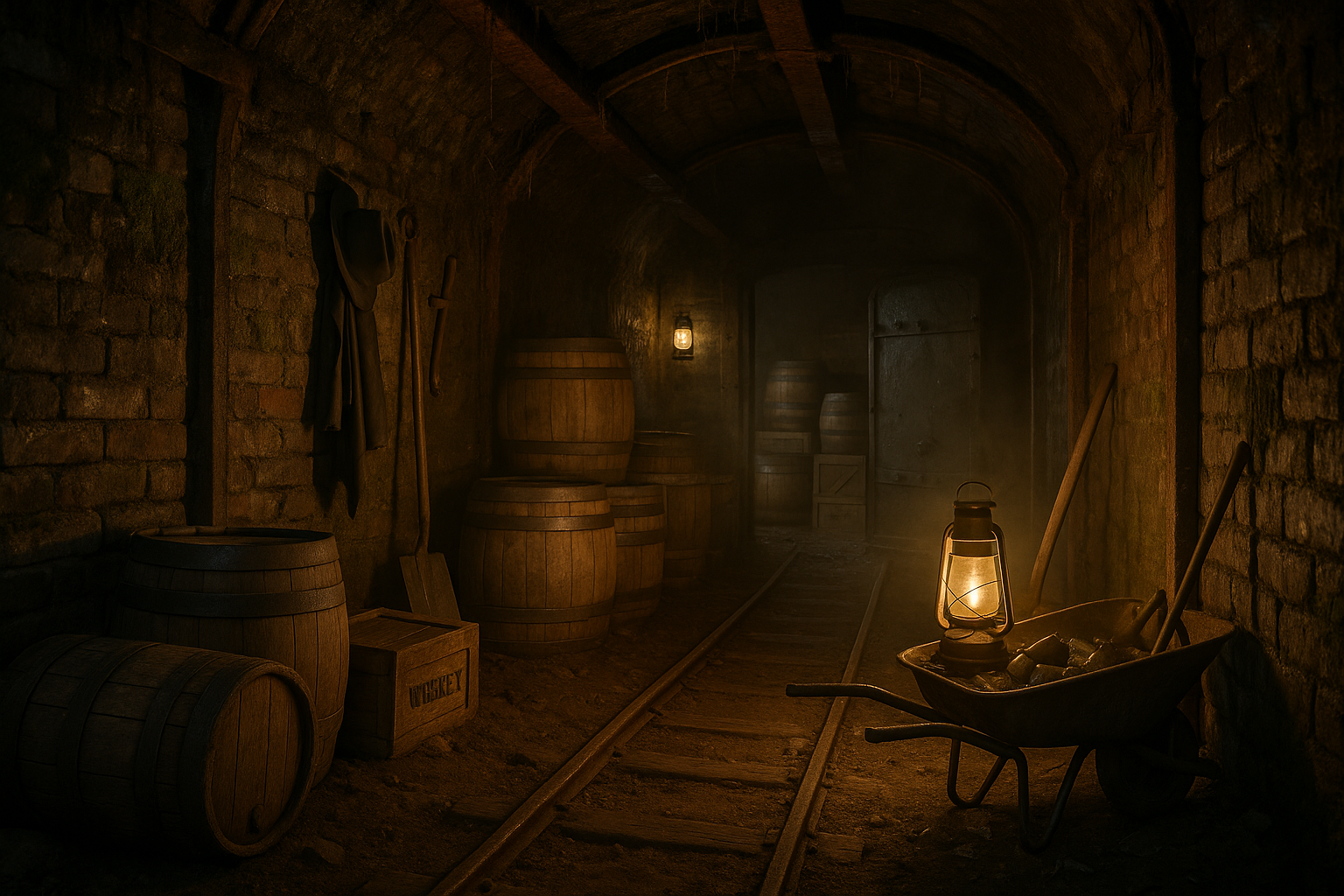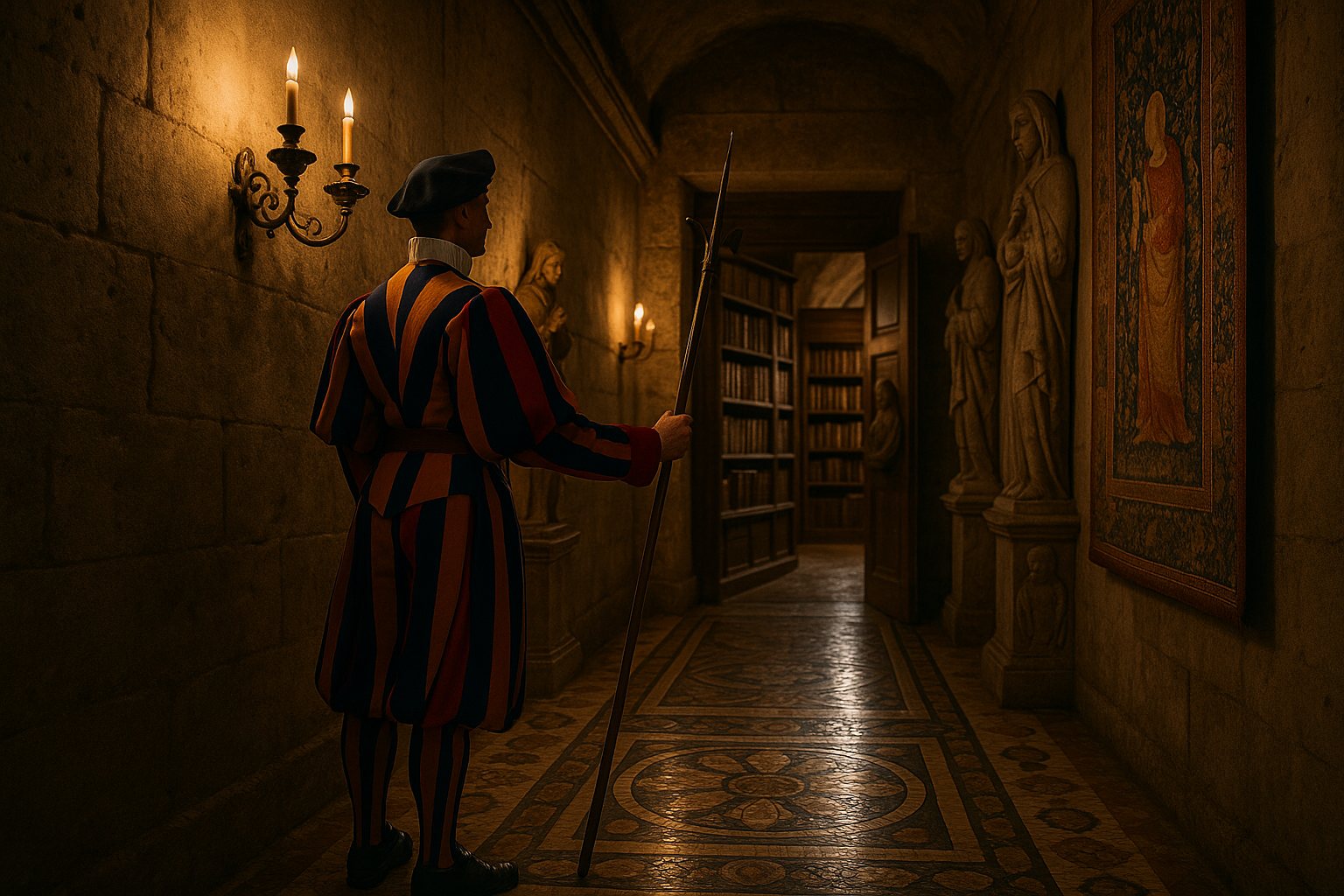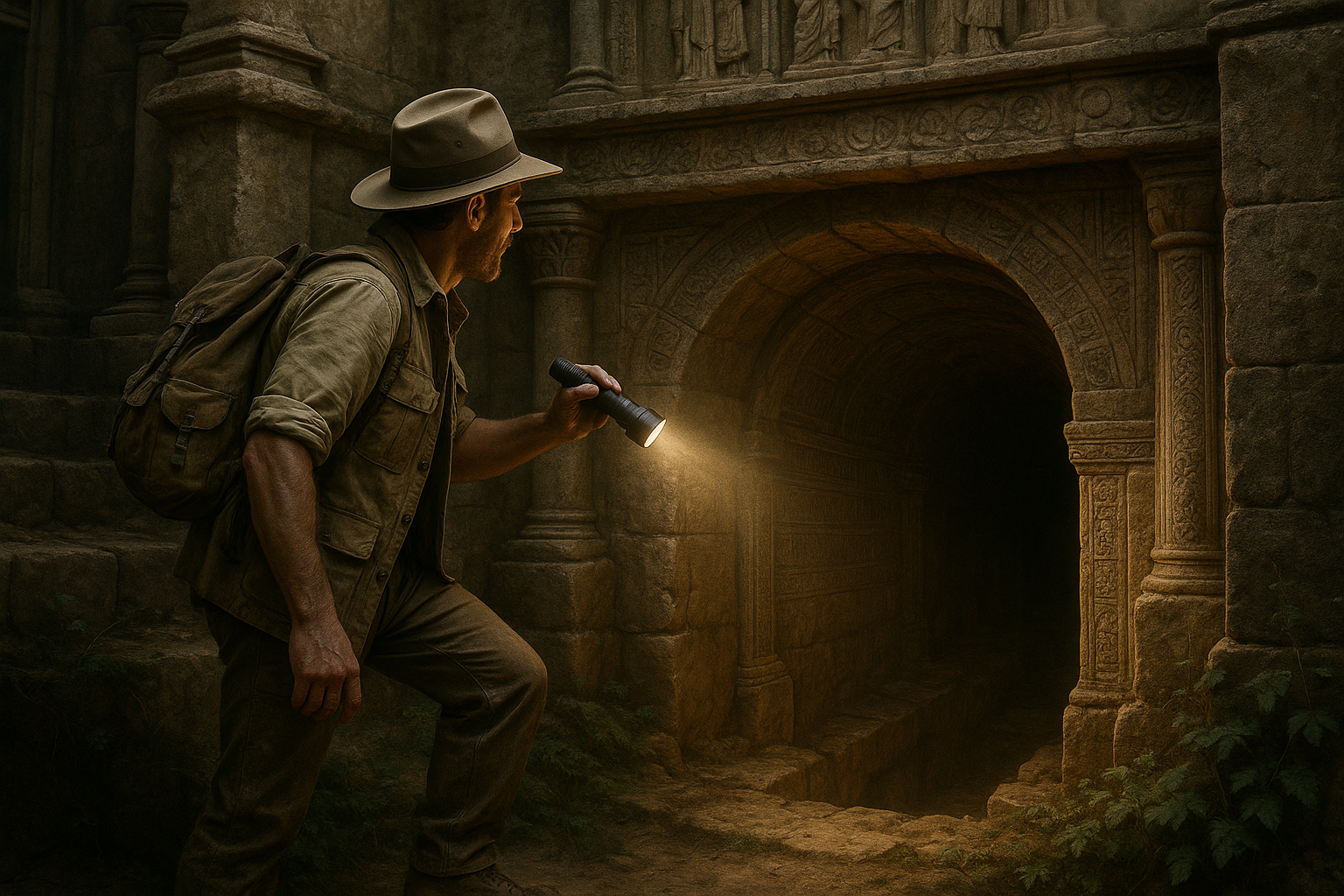In a world where transparency and openness are often touted as virtues, there exist places shrouded in secrecy and steeped in mystery, known to only a select few. These are the hidden presidential bunkers of the United States, silent sentinels standing guard beneath our feet, cloaked in layers of history and intrigue. These enigmatic refuges, designed to protect the nation’s most powerful leader, evoke curiosity and fascination akin to the hidden chambers of ancient pyramids or the long-lost city of Atlantis. As we embark on this journey through these secret sanctuaries, prepare to delve into a realm where history meets mystery, and where survival intertwines with strategy.
Imagine a world on the brink of disaster, where every decision holds the weight of the nation’s future. In such times, the President of the United States must have a secure and impenetrable refuge. This necessity has birthed some of the most fascinating underground structures in existence, each with its own unique story. From Cold War-era designs to modern marvels of engineering, these bunkers serve as a testament to human ingenuity and foresight. Yet, despite their critical role, they remain largely hidden from public view, their secrets buried deep beneath layers of earth and official classification. This article will peel back those layers, offering a glimpse into the extraordinary measures taken to ensure presidential safety.
We begin our exploration with a look at the historical context that necessitated the creation of these bunkers. The Cold War, with its ever-present threat of nuclear annihilation, spurred the development of many of these facilities. The infamous Greenbrier bunker, for instance, concealed beneath a luxury resort, was an open secret designed to house Congress in the event of an emergency. Meanwhile, Mount Weather, another key facility, remains operational to this day, its capabilities evolving with the times. These bunkers are not mere relics of the past; they continue to play a vital role in national security, adapting to the challenges of the modern world.
Next, we’ll delve into the architectural and technological marvels that make these bunkers so formidable. Built to withstand nuclear blasts, these structures are a blend of cutting-edge technology and robust engineering. From air filtration systems capable of neutralizing chemical agents to self-sustaining power supplies, each aspect of their design reflects a commitment to survival under the most dire circumstances. As we uncover these features, we’ll also explore the human element – the dedicated teams tasked with maintaining and operating these facilities, ensuring they are ready at a moment’s notice.
Finally, we’ll ponder the future of presidential bunkers in an era of evolving threats. Cyber warfare, terrorism, and even climate change pose new challenges that these sanctuaries must be prepared to confront. How do these bunkers fit into a modern security strategy? What innovations are on the horizon to enhance their effectiveness? As we contemplate these questions, we invite you to consider the delicate balance between secrecy and security, and the enduring need for these hidden havens in a world where uncertainty is the only constant. Join us as we unveil the mysteries of the United States’ secret presidential bunkers, where history, technology, and security converge in a fascinating tale of survival and resilience. 🏰🔍
Introduction to Presidential Bunkers
Deep beneath the surface of the United States, hidden from the everyday hustle and bustle, lie the secret sanctuaries designed to protect the nation’s leaders during times of crisis. These presidential bunkers are more than just architectural wonders; they are the silent witnesses of history, shrouded in mystery and equipped to handle the unthinkable. Exploring these hidden bunkers reveals not just their physical design but also their historical significance and the foresight required to construct them.
Presidential bunkers are built to withstand the unimaginable — from nuclear attacks to natural disasters. Each facility is strategically located and designed with state-of-the-art technology to ensure the safety and continuity of government operations. The origins of these bunkers date back to the early days of nuclear anxiety during the Cold War, when the threat of a nuclear attack prompted the U.S. government to take unprecedented measures. The exploration of these bunkers provides insight into the lengths nations will go to protect their leaders and maintain national security.
The development of these facilities involves a delicate balance of engineering ingenuity and geopolitical strategy. As we delve deeper into the hidden bunkers of the United States, we uncover stories of resilience, secrecy, and the relentless pursuit of safety. Whether buried beneath mountains or nestled in remote regions, these bunkers represent a legacy of preparedness that continues to evolve with the changing landscape of global threats.
The History Behind the Construction
The history of presidential bunkers in the United States is closely tied to the geopolitical tensions of the 20th century. During the Cold War, the looming threat of a nuclear confrontation with the Soviet Union prompted the U.S. government to develop contingency plans for the survival of its leaders. The fear of a nuclear holocaust necessitated the creation of secure, hidden locations where the President and key government officials could be relocated in the event of an attack.
One of the earliest and most famous of these bunkers is the Greenbrier bunker, located beneath the Greenbrier Resort in West Virginia. Built in the late 1950s, the bunker was designed to house members of Congress in the event of a nuclear war. Its existence was a closely guarded secret until it was revealed to the public in 1992. The Greenbrier bunker was a marvel of engineering at its time, complete with facilities to accommodate hundreds of people for an extended period. Its construction marked the beginning of an era of covert operations aimed at ensuring government continuity.
As the Cold War progressed, so did the sophistication of presidential bunkers. The Raven Rock Mountain Complex, often referred to as Site R, was constructed to serve as an alternate Pentagon. Hidden within a Pennsylvania mountain, this facility was built to withstand a nuclear blast and maintain military operations. Similar bunkers, like the Cheyenne Mountain Complex in Colorado, further illustrate the lengths to which the U.S. went to protect its leadership and strategic capabilities. These bunkers, with their reinforced structures and advanced technology, symbolize the intense period of Cold War paranoia and preparation.
As the world entered the post-Cold War era, the focus shifted from nuclear threats to a broader spectrum of potential dangers. The continuity of government programs evolved to address threats such as terrorism and cyberattacks. While some bunkers have been decommissioned or repurposed, others continue to operate as vital components of national security strategy. The history of these bunkers is a testament to the evolving nature of global threats and the continuous efforts to safeguard the nation’s leadership.
Technological Advancements in Bunker Construction
The technological advancements in bunker construction reflect a sophisticated understanding of engineering and security. Modern presidential bunkers are equipped with advanced communication systems, ensuring that even in the direst circumstances, the government remains connected and operational. These systems include encrypted communication lines, satellite uplinks, and secure data networks capable of withstanding electromagnetic pulses and other disruptive forces.
Furthermore, the integration of renewable energy sources and sustainable practices has become a priority in the construction of these facilities. Many bunkers are equipped with independent power systems, water purification plants, and air filtration systems that ensure long-term self-sufficiency. These advancements not only enhance the survivability of the bunkers but also reflect an awareness of environmental and resource challenges.
The security measures in place within these bunkers are unparalleled. Biometric access controls, surveillance systems, and fortified entry points ensure that only authorized personnel can gain access. The design of these facilities often incorporates deception and camouflage, making them difficult to detect from both the ground and the air. These technological advancements are a testament to the ongoing commitment to protecting the nation’s leadership in an increasingly complex and uncertain world.
Strategically Located Presidential Bunkers
The strategic placement of presidential bunkers across the United States is a key factor in their effectiveness. These bunkers are often located in geographically diverse areas, ensuring that even if one facility is compromised, others remain operational. The choice of location takes into account factors such as accessibility, geological stability, and proximity to critical infrastructure.
One notable example is Mount Weather, a facility located in the Blue Ridge Mountains of Virginia. This bunker serves as an emergency operations center for the Federal Emergency Management Agency (FEMA) and is equipped to accommodate high-ranking government officials. The location was selected for its remote setting and natural protection, providing a secure environment in times of crisis. Mount Weather played a significant role during the September 11 attacks, serving as a coordination center for emergency response efforts.
Another key facility is the aforementioned Raven Rock Mountain Complex, strategically situated near the U.S. East Coast. This location allows for quick access from Washington D.C., while also providing a secure and fortified environment. The choice of location for these bunkers is not only based on physical security but also on their ability to support the continuity of government operations across various scenarios.
Comparative Analysis of Bunker Locations
Understanding the strategic importance of these locations can be further illustrated through a comparative analysis. The table below outlines the key features of several presidential bunkers:
| Bunker | Location | Purpose | Key Features |
|---|---|---|---|
| Greenbrier Bunker | West Virginia | Congressional Shelter | Accommodation for hundreds, secure communication lines |
| Raven Rock Mountain Complex | Pennsylvania | Alternate Pentagon | Nuclear blast resistance, advanced communication systems |
| Mount Weather | Virginia | FEMA Emergency Center | Remote location, coordination center capabilities |
| Cheyenne Mountain Complex | Colorado | Military Operations Center | Deep underground, advanced monitoring systems |
The comparative analysis showcases the diversity and strategic significance of these locations, each serving a unique role in ensuring the continuity of government and the protection of its leaders. 🏛️
The Secretive Nature of Presidential Bunkers
The secretive nature of presidential bunkers adds an additional layer of intrigue and mystery to these facilities. Much of what we know about them comes from declassified documents, whistleblower accounts, and investigative journalism. The secrecy surrounding these bunkers is intentional, aimed at safeguarding their locations and operations from potential adversaries.
This clandestine approach is crucial for maintaining the operational security of the bunkers. Despite being known to exist, many details about their specific capabilities and protocols remain undisclosed. This veil of secrecy ensures that potential threats cannot exploit vulnerabilities or develop countermeasures against these critical facilities.
The ongoing balance between transparency and secrecy poses challenges for both government officials and the public. While there is a need for accountability and oversight, revealing too much information could compromise national security. This delicate balance is managed through classified briefings to select congressional members and oversight committees, ensuring that the necessary checks and balances are in place without jeopardizing the effectiveness of these bunkers.
Impact on Public Perception
The secretive nature of presidential bunkers also influences public perception and understanding of national security measures. For some, the existence of these bunkers is a reassurance that the government is prepared for worst-case scenarios. For others, it raises concerns about the allocation of resources and the potential for misuse of power.
Public perception is shaped by a variety of factors, including media portrayals, government communication, and personal beliefs about national security. In recent years, there has been increased interest in transparency and accountability, leading to calls for more information about the operations and funding of these facilities. Balancing these demands with the need for secrecy remains a complex challenge for policymakers.
Conclusion
Exploring the hidden presidential bunkers of the USA offers a fascinating glimpse into the intersection of history, technology, and security. These secret sanctuaries are more than just relics of the past; they continue to play a vital role in safeguarding the nation’s leadership and ensuring the continuity of government operations in times of crisis. As we continue to face new and evolving threats, the importance of these bunkers remains as relevant as ever. For those interested in learning more about the intricacies of these fascinating facilities, watch this insightful video: [Inside the Presidential Bunker – Channel: Today I Found Out](https://www.youtube.com/watch?v=I-3K1Jj0ebQ). 📽️

In wrapping up our exploration of “Secret Sanctuaries: Exploring the Hidden Presidential Bunkers of the USA,” we’ve taken a deep dive into the clandestine world of these fortified havens, designed to protect the highest office in times of unprecedented peril. These hidden bunkers are not just feats of engineering but also monumental testaments to the lengths nations will go to safeguard their leadership and, by extension, their way of life.
From the inception of these secret bunkers during the heightened tensions of the Cold War to their continued relevance in today’s uncertain geopolitical climate, we have traversed the intricate tapestry of security, technology, and political foresight. The historical context of these structures underscores their necessity and evolution, reflecting the ever-changing nature of threats faced by the United States. Their development was a strategic response to the looming specter of nuclear warfare, showcasing both the fear and ingenuity of the era. The construction of these bunkers, such as the infamous Greenbrier and the lesser-known Mount Weather, reveals not only an era of anxiety but also one of remarkable ingenuity and strategic foresight.
As we delved deeper, the technological advancements that facilitate these bunkers’ operations became apparent. Equipped with state-of-the-art communication systems, life-sustaining resources, and unparalleled defense mechanisms, these sanctuaries are masterpieces of modern engineering. They stand as silent sentinels, ready to serve when diplomacy fails and crisis looms. Their existence raises intriguing questions about transparency, national security, and the delicate balance of power in the modern world.
The human aspect of these bunkers, often overshadowed by their technical specifications, is equally compelling. The staff dedicated to maintaining these facilities and the protocols established for their activation highlight a blend of patriotism and professionalism. The psychological preparedness required to potentially operate from such isolated environments speaks volumes about the resilience and adaptability expected of our leaders and their teams.
The significance of these hidden presidential bunkers extends beyond their primary function as protective shelters. They serve as a powerful reminder of the responsibilities entrusted to our leaders and the lengths taken to ensure the continuity of governance. Their existence prompts us to reflect on the broader implications of national security measures and the ethical considerations surrounding them.
In emphasizing the importance of these secret sanctuaries, we must recognize their role in maintaining a semblance of stability in an unpredictable world. They symbolize not just the preservation of leadership but the preservation of democracy itself. The very concept of such bunkers challenges us to ponder the broader themes of security versus freedom and the perpetual vigilance required to safeguard both.
As we conclude, it’s essential to acknowledge the delicate balance these bunkers maintain between necessary secrecy and public accountability. Their clandestine nature often leads to speculation and intrigue, underscoring the importance of ongoing dialogue about their role in modern society. Transparency, where possible, can foster public trust without compromising national security.
We invite you, our readers, to reflect on what you’ve learned and consider the broader implications of these presidential bunkers. How do they shape our understanding of security, leadership, and the responsibilities of government? We encourage you to share your thoughts, engage in discussions, and perhaps even explore further through credible sources such as the Federation of American Scientists or the National Security Archive.
In an age where information is both a tool and a weapon, understanding the intricacies of such critical infrastructure empowers us to be informed citizens. By sharing this article, you contribute to a broader conversation about the measures in place to protect not just our leaders but our way of life. Let’s continue this dialogue, keeping in mind that these hidden sanctuaries, while secretive, are crucial to the resilience of our nation.
🌟 Stay curious, stay informed, and let us strive to understand the depths of the systems that quietly stand guard over our freedoms. Together, let’s delve into these hidden worlds and uncover the stories they hold. After all, knowledge is the true fortress of democracy.
Toni Santos is a visual storyteller and artisan whose work explores the quiet power of what lies beneath. With a deep fascination for subterranean and hidden architecture, Toni uncovers the layers, voids, and forgotten spaces that shape our built environment from the shadows.
His art is a journey through the unseen — from ancient underground chambers to sealed passageways, service tunnels, and foundations buried in time. Each creation tells a story of silence, secrecy, and structure — revealing how absence and concealment can be just as meaningful as what’s visible above ground.
Whether working through visual compositions, architectural studies, or symbolic handcrafted pieces, Toni captures the soul of hidden spaces. His work bridges art and archaeology, blending design with discovery. Trained in visual design and traditional techniques, Toni creates with intention. His pieces don’t just depict — they interpret, inviting viewers to rethink what space, memory, and architecture mean when they’re hidden from view.
As the creative force behind Vizevex, Toni shares this perspective through curated visual narratives, symbolic collections, and interpretive essays that give voice to the quiet geometries beneath our feet.
His work is a tribute to:
The mystery of spaces built to be forgotten
The symbolism embedded in foundations, voids, and passageways
The timeless connection between human intention and hidden structure
Whether you’re an artist, an urban explorer, or someone fascinated by the unseen frameworks that support our world, Toni invites you into a realm where architecture becomes myth — one corridor, one layer, one buried story at a time.





